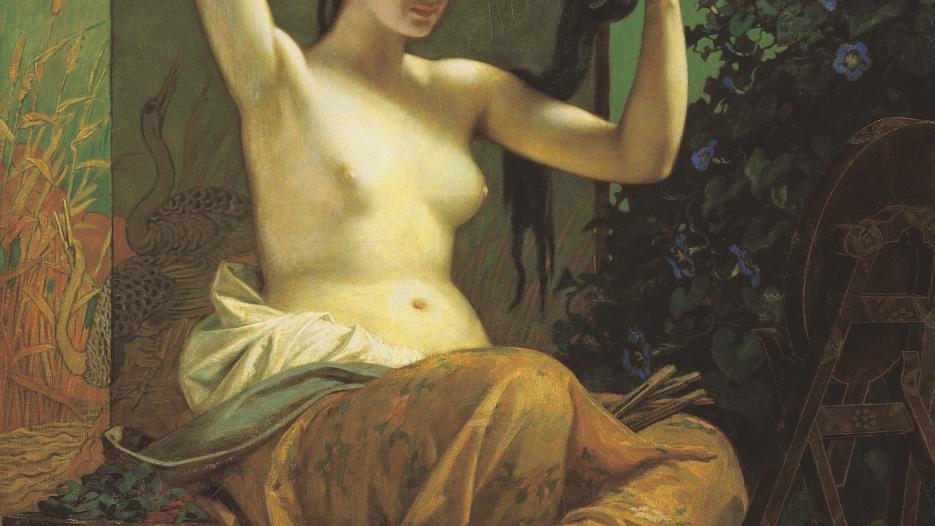
Japan’s self-chosen isolation, which had lasted for two centuries, ended in 1853 with the arrival of Commodore Matthew C. Perry’s squadron. With several of the island country’s ports opened for international trade, from the early 1850s Japanese artworks started to be exported to Europe on a large scale, and the first Western collections of Japanese art came into being.
The keen interest in Japan that marked the Western countries and Hungary from the middle of the 19th century, was called, along with the works of art that were inspired by Japanese art, “Japonism.” The period’s fashionable ceramics were decorated with Japanese figures and motifs, the stages featured Madame Butterflies, and no gentlewoman’s wardrobe would have been complete without a kimono. “Geisha” was one of the first Japanese words to enter the Hungarian language, which is why it appears in the title of this exhibition of Japonism in Hungary.
Japonism is one of the most exciting examples of intercultural influences. It was a case of embracing a foreign culture, rejuvenating thereby traditional or outdated forms and outlooks.
As in most Western countries, Japonism was a complex phenomenon in Hungary, becoming broadly manifest in its influence on styles, as well as in the themes and motifs that were borrowed. It was even present in works whose intentions were symbolic, thanks to the artists’ familiarity with Buddhist teachings. It was not the kind of catalyst its was in 19th-century French art, as Hungarian artists became familiar with it mostly when Impressionism, post-Impressionism and Art Nouveau reached the country, and then as the integral part of mature works. It had a very important role in the case of Art Nouveau works, just as in giving currency to the idea of total art.
On view from 16 December, the exhibition has been realized with support from the Ministry of Human Resources, and was jointly organized by the Kovács Gábor Art Foundation, the Ferenc Hopp Museum of Asiatic Arts, the Museum of Applied Arts – Hungarian National Gallery, the Museum of Applied Arts, and the Castle Garden Bazaar.
Curators of the exhibition:
Dr Györgyi Fajcsák, sinologist, Director of the Ferenc Hopp Museum of Asiatic Arts
Dr Katalin Gellér, art historian, HAS Research Centre for the Humanities, Institute of Art History
Mirjam Dénes, art historian, curator of the Japanese Collection, Ferenc Hopp Museum of Asiatic Arts
Gábor Marosvölgyi, art historian, Kovács Gábor Art Foundation








